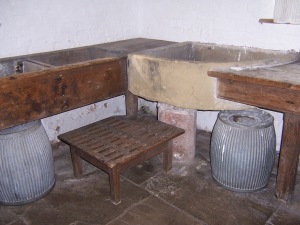My Last Duchess by Robert Browning, was a poem my English teacher, Mr Clapp, used to show us how not everything could be understood by the first or simple reading of words alone. It remains one of the most powerful introductions any student might have to the business of writing.
Browning is focussing on a portrait, but using spare phrases that chill with their mundaneity, he lets us see another portrait in our minds – the monster who was the girl’s husband. Other viewers might look at that picture and see:
Essex Girl – a dutiful wife – an obliging sitter – a young girl – a father’s daughter – a mother’s joy – a brother’s friend – a sister’s confidant. We all see someone and we all make different stories for her.
The early pictures we’re exposed to are likely to have animals in them. They might be in picture books with wonderful illustrations of cartoonish bears. Small children are quite happy to believe that animals talk and open honey pots and paddle boats down the river. Teenage girls probably go on believing horses are human beyond the moment parents might consider healthy.
How many have seen the photographs of Edinburgh’s male panda recently? He’s ready to mate, we’re told, because he’s doing handstands and spraying his territory. Doesn’t that prompt a reaction? if you’re writing romance, doesn’t that take you easily along to the adage, about a young man’s fancy in Springtime?
And having arrived at your young man of preference, don’t you wonder about his wheels? As I’m writing historical romance, it sends me off to photos of horse drawn traps, carriages and curricles. How did a girl hang onto that? Occasionally, you can see the real thing in a private collection.
What would historical writers do without the National Trust and National Trust for Scotland properties to visit? Quite often at big houses or museums I pick up a pile of postcards. They sit around my writing place and are a ready reference as well as an inspiration. They are often of the house’s paintings and contain valuable information about fashions of the time. I have a lovely domestic scene from the Geoffrye Museum in London, artist unknown, that shows a middle-class family in their evening wear. One of the effects of the postcard is to make me wonder what it was like to spend every evening with these same people. How boring or entertaining was it? Doesn’t it make you understand how welcome visitors must have been to break the tedium? Doesn’t it send your writer’s mind off at all sorts of tangents dreaming up the gossip?
And what about the people who underpinned the comfortable classes? How about this taken at a big house outside Manchester? This is one of a series of photos I took and have subsequently used them as prompts for flash fiction. Sibling Rivalry is up on the Shortbread website and The Laundry Wife’s Daughter on Writelink’s where it won a prize.

The Laundry
http://www.shortbreadstories.co.uk/story/view/sibling_rivalry/#axzz2LjiMBhni
http://write-link-creative-writing-contests.com/flashsplash/the-laundry-wifes-daughter-2/

